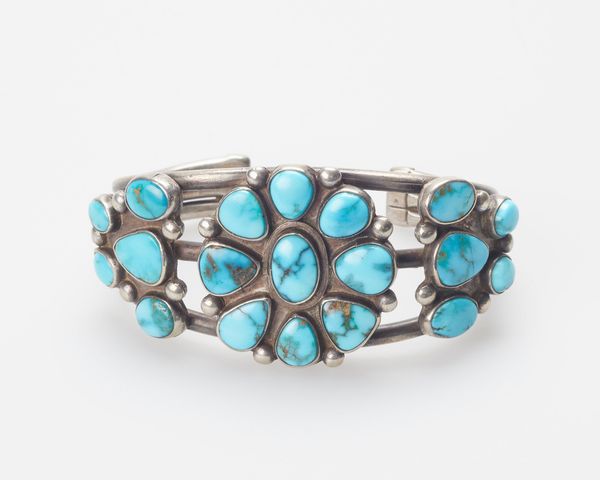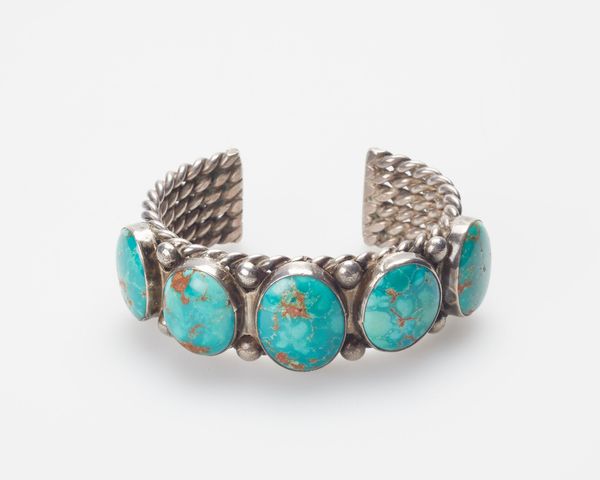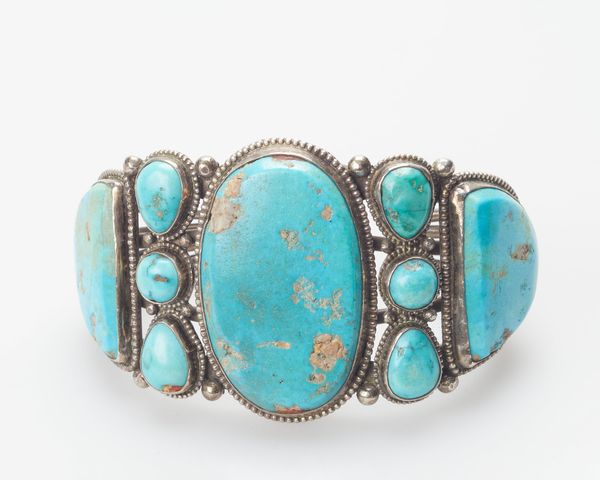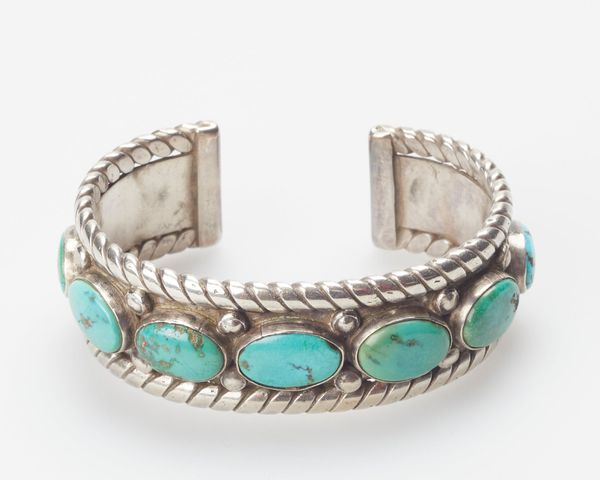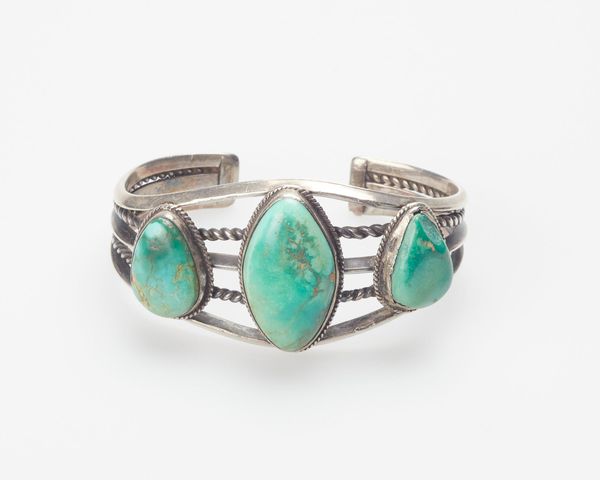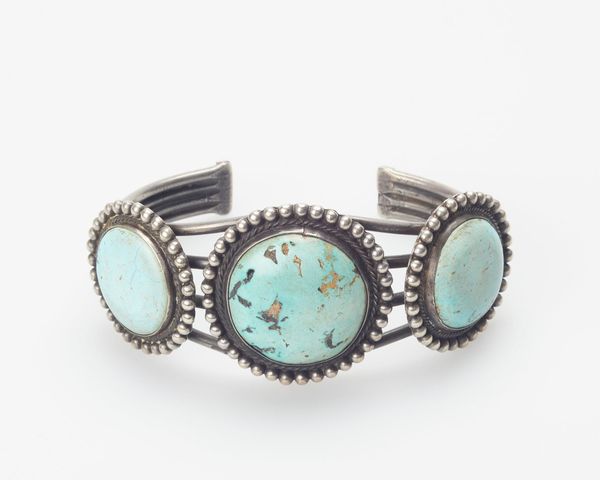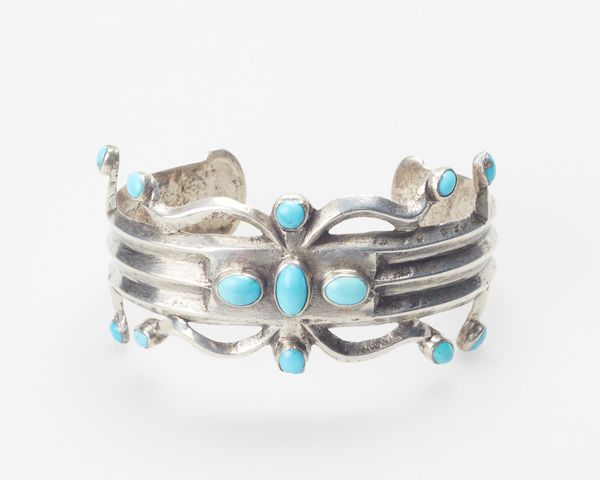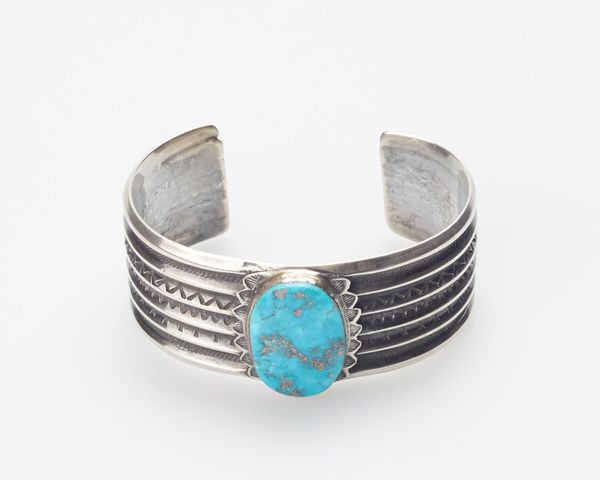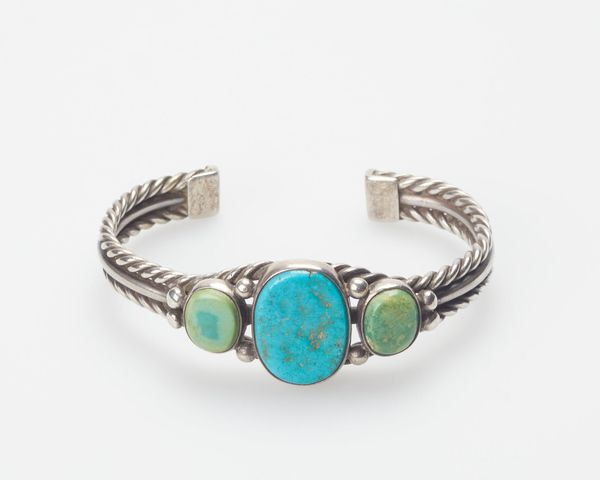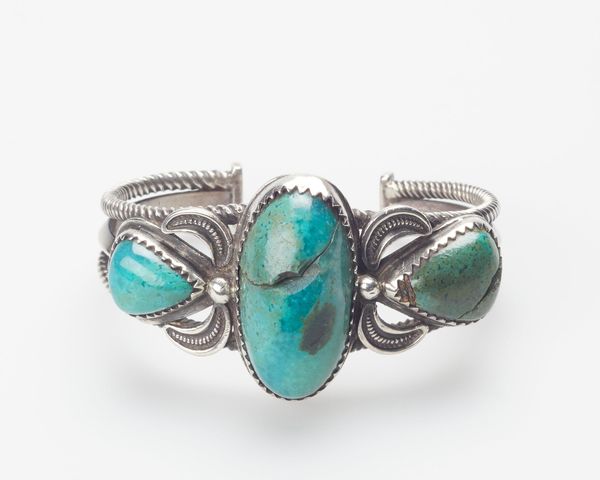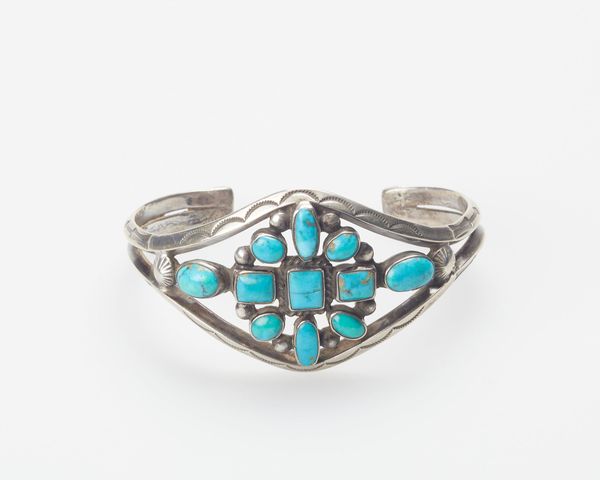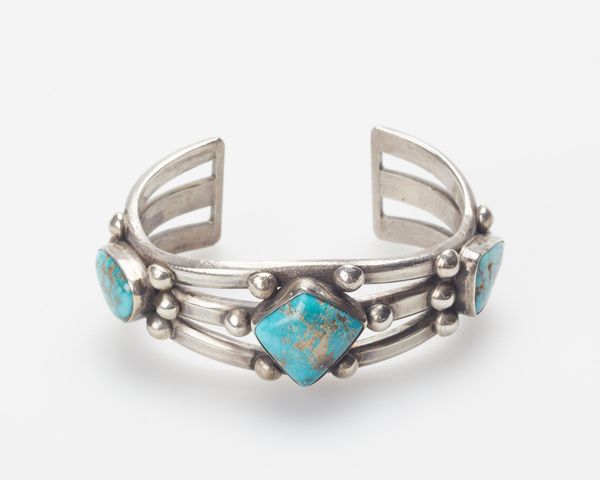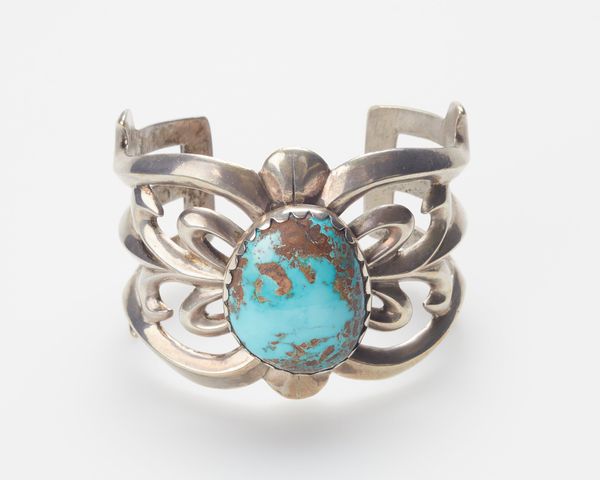
silver, metal
#
silver
#
metal
#
indigenous-americas
Dimensions: 2 5/8 x 1 1/4 x 1 1/4 in. (6.67 x 3.18 x 3.18 cm)
Copyright: Public Domain
Curator: Here we have a stunning piece of jewelry, a silver and turquoise bracelet crafted by a Navajo artist, dating from around 1930. Editor: It’s beautiful. The silver work is so detailed, and the turquoise stones give it this vibrant splash of color that evokes the Southwestern landscape. It feels both grounded and uplifting. Curator: Indeed. This bracelet, created by Diné artisans, speaks to a complex history. The introduction of silversmithing to the Navajo came through contact with Europeans and Mexicans. However, they transformed these techniques, incorporating distinct styles, symbols, and worldviews. The choice of materials reflects access and cultural value. What we read into the symbolic implications of incorporating geometric shapes into Indigenous aesthetics is where the interpretation begins. Editor: So it’s not just about acquiring a new skill, but a form of cultural negotiation. These art forms become declarations of sovereignty. Were these pieces initially made for their own community or primarily for sale to outsiders? Curator: A very crucial distinction to consider! The rise of tourism certainly influenced production. However, the creation of jewelry, blankets, and other items simultaneously served as a form of economic and cultural resilience. Pieces such as this allowed Indigenous artisans to navigate a changing world, reasserting agency through artistic practice and economic means, creating a visual language that resisted erasure. The work encapsulates tensions of cultural survival amid oppression. Editor: It's a fascinating testament to resilience. Looking at it, you see both the beauty and the complex narrative woven into each silver coil and stone setting. This decorative object truly embodies layers of history, commerce, cultural exchanges, and enduring strength. Curator: Exactly, reflecting on the interplay between form, function, and sociopolitical implications surrounding artistic practices reveals the depth and ongoing relevance of historical material culture in our current environment. Editor: Definitely food for thought. It gives one an impetus to explore ways that history and current experiences come into contact.
Comments
No comments
Be the first to comment and join the conversation on the ultimate creative platform.
